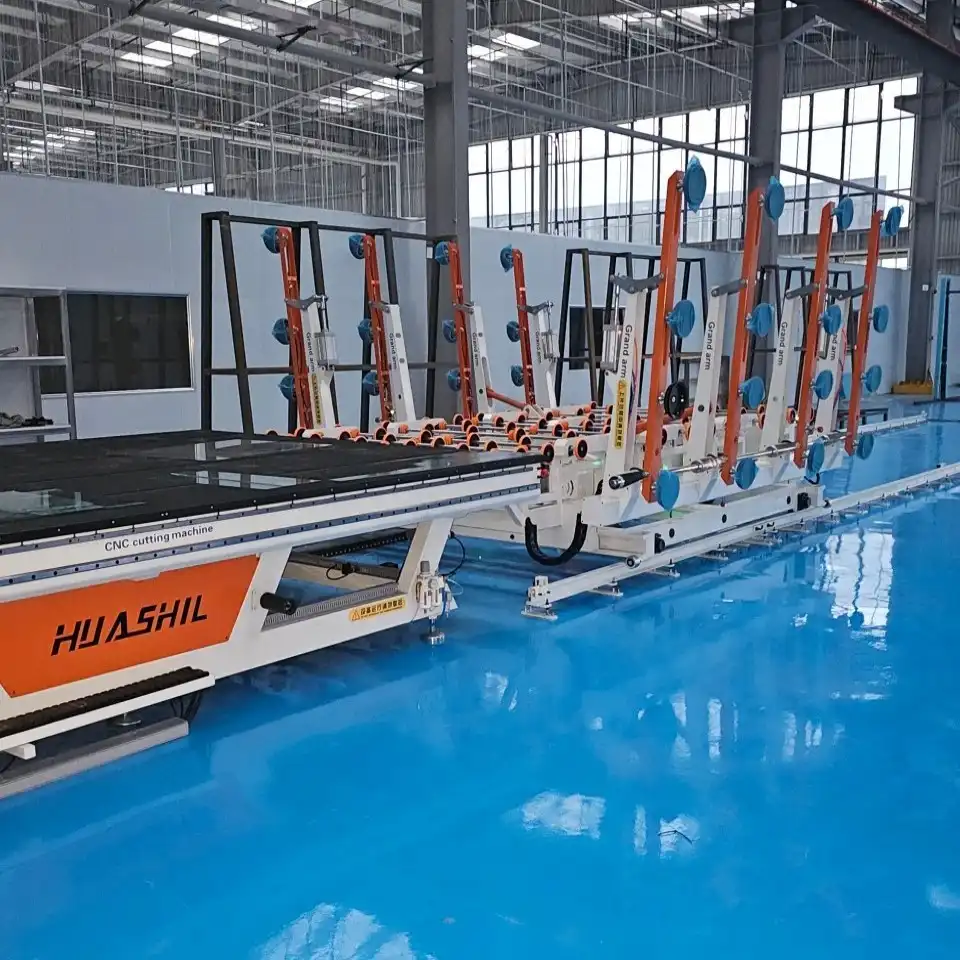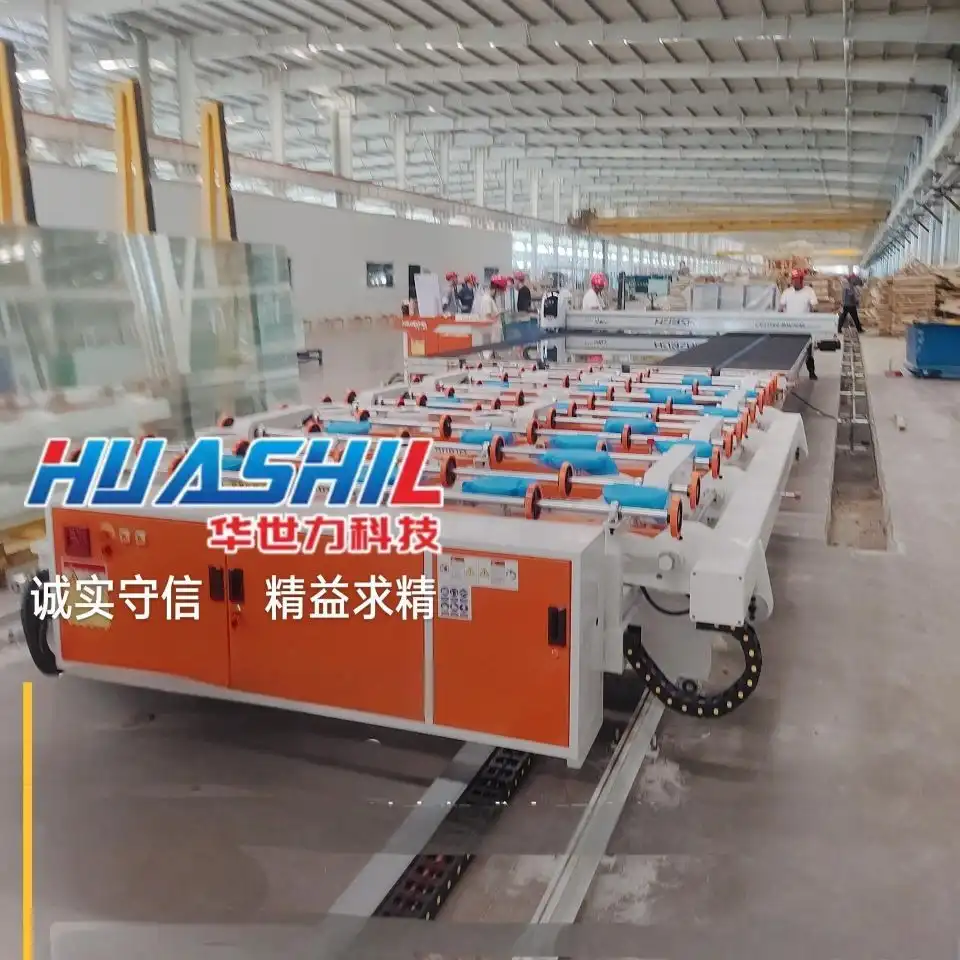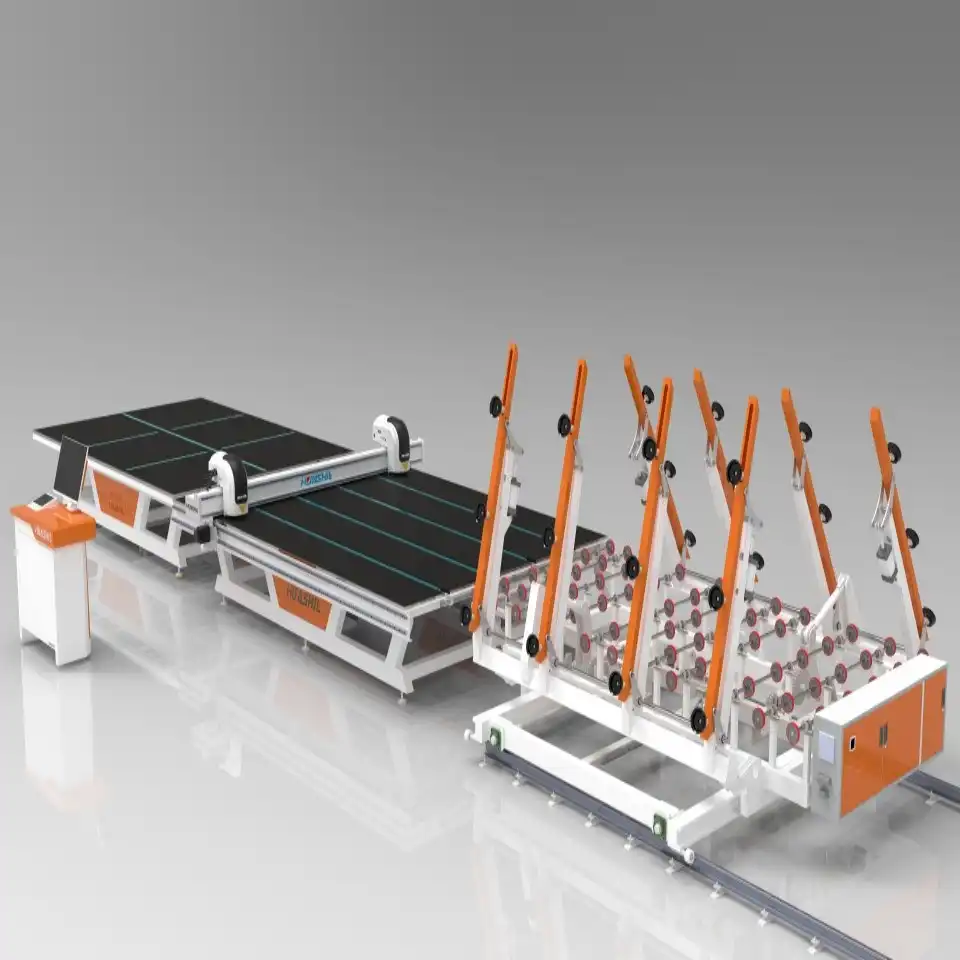How do robotic arms improve glass cutting efficiency?
Robotic arms have emerged as game-changers in the realm of glass cutting, offering unparalleled precision and consistency. These mechanical marvels are equipped with advanced sensors and programming capabilities, allowing them to execute intricate cutting patterns with remarkable accuracy. The integration of robotic arms in integrated glass cutting machine has led to a significant boost in efficiency, minimizing waste and maximizing output.
One of the key advantages of robotic arms in glass cutting is their ability to work tirelessly without fatigue. Unlike human operators, these machines can maintain peak performance throughout extended production runs, ensuring consistent quality across batches. This endurance factor is particularly crucial in large-scale manufacturing operations where maintaining high standards over prolonged periods is essential.

Moreover, robotic arms excel in handling complex cutting geometries that would be challenging or time-consuming for human operators. Whether it's creating intricate designs for decorative glass or precision cuts for automotive windshields, these automated systems can execute tasks with a level of detail and repeatability that surpasses manual capabilities. This precision not only enhances the quality of the final product but also reduces the likelihood of errors and material wastage.
The versatility of robotic arms in glass cutting is another factor contributing to their efficiency. These systems can be quickly reprogrammed to accommodate different glass thicknesses, shapes, and cutting requirements. This flexibility allows manufacturers to swiftly adapt to changing production demands without the need for extensive retooling or training, thereby minimizing downtime and maximizing productivity.
Furthermore, the integration of robotic arms with other automated systems in the production line creates a seamless workflow. For instance, robotic arms can work in tandem with automated glass loading and unloading systems, creating a continuous production cycle that significantly reduces handling time and the risk of breakage during transitions. This synergy between different automated components results in a more streamlined and efficient manufacturing process.
AI-powered defect detection in automated systems
Artificial Intelligence (AI) has revolutionized quality control in glass cutting operations, particularly in the realm of defect detection. AI-powered systems integrated into integrated glass cutting machine have the capability to identify and analyze imperfections with a level of accuracy and speed that far surpasses human inspection.
These AI systems utilize advanced computer vision algorithms and machine learning models trained on vast datasets of glass defects. As the glass moves through the cutting process, high-resolution cameras capture images that are instantly analyzed by the AI. The system can detect a wide range of defects, including bubbles, scratches, inclusions, and edge defects, often at microscopic levels that might be missed by the human eye.
One of the key advantages of AI-powered defect detection is its ability to learn and improve over time. As the system encounters new types of defects or variations, it can update its models to become even more accurate and comprehensive in its detection capabilities. This continuous learning process ensures that the quality control system remains robust and adaptable to changing production conditions or new glass types.
The implementation of AI in defect detection also allows for real-time monitoring and feedback. When a defect is detected, the system can immediately alert operators or automatically adjust cutting parameters to mitigate the issue. This rapid response capability minimizes waste and prevents defective pieces from progressing further in the production line, ultimately saving time and resources.
Moreover, AI-powered systems can analyze patterns and trends in defect occurrences over time. This data-driven insight can be invaluable for identifying root causes of recurring issues, whether they're related to raw material quality, machine calibration, or environmental factors. By pinpointing these underlying problems, manufacturers can implement targeted improvements to their processes, leading to overall quality enhancement and reduced defect rates.
The integration of AI defect detection with automated cutting systems creates a powerful synergy. For instance, when an AI system identifies a defect in a glass sheet, it can communicate with the cutting machine to optimize the cutting pattern, maximizing the usable area of the glass and minimizing waste. This level of intelligent automation not only improves quality but also contributes to more sustainable manufacturing practices by reducing material waste.

Reducing human error with full automation
Full automation in glass cutting represents the pinnacle of precision and consistency in the manufacturing process. By minimizing human intervention, these systems dramatically reduce the potential for errors that can occur due to fatigue, distraction, or variations in skill levels among operators. The result is a highly reliable and repeatable process that ensures consistent quality across production runs.
One of the primary advantages of full automation is the elimination of variability in the cutting process. Integrated glass cutting machines are programmed with exact specifications and cutting parameters, ensuring that each piece of glass is cut to the same exacting standards. This level of consistency is particularly crucial in industries such as automotive and aerospace, where even minor deviations can have significant implications for safety and performance.
Full automation also addresses the challenges associated with complex cutting patterns and large-scale production. These systems can handle intricate designs and multiple cuts with a level of precision that would be difficult to maintain consistently with manual operations. For large production runs, automated systems can work continuously without the need for breaks, shift changes, or downtime due to operator fatigue, thereby significantly increasing throughput and efficiency.
Another significant benefit of full automation is the enhanced safety it brings to the glass cutting process. Glass cutting can be a hazardous operation, with risks of cuts, strains, and repetitive motion injuries for human operators. Automated systems remove workers from direct contact with sharp edges and heavy glass sheets, creating a safer work environment. This not only protects employees but also reduces the potential for workplace accidents and associated costs.
The data collection and analysis capabilities of fully automated systems provide valuable insights for process improvement. These machines can track every aspect of the cutting process, from cutting speeds and angles to material utilization rates. This wealth of data allows manufacturers to identify bottlenecks, optimize cutting patterns, and fine-tune machine parameters for maximum efficiency. The result is a continually improving process that adapts to changing requirements and maintains peak performance.
Full automation also facilitates better integration with other stages of the glass manufacturing process. For example, automated cutting systems can be seamlessly connected with inventory management systems to ensure optimal material usage and just-in-time production. They can also interface with quality control systems and packaging lines, creating a cohesive and efficient end-to-end production flow.
The flexibility of fully automated systems is another key advantage. While these machines excel at high-volume production, they can also be quickly reconfigured for smaller batch sizes or custom orders. This adaptability is particularly valuable in today's market, where manufacturers need to respond swiftly to changing customer demands and product variations.
As technology continues to advance, we can expect to see even more sophisticated automation in glass cutting. Developments in areas such as machine learning, advanced robotics, and Internet of Things (IoT) connectivity promise to further enhance the capabilities of these systems. Future integrated glass cutting machines may be able to self-optimize based on real-time data, predict maintenance needs before failures occur, and even autonomously adjust to variations in glass quality or environmental conditions.

The journey towards full automation in glass cutting is not without challenges. Initial investment costs can be significant, and there's a learning curve associated with implementing and maintaining these advanced systems. However, the long-term benefits in terms of quality, efficiency, and competitiveness make it a worthwhile endeavor for many glass manufacturers.
In conclusion, the automation of integrated glass cutting machines represents a significant leap forward in the glass manufacturing industry. From the precision of robotic arms to the intelligent defect detection of AI systems and the consistency of full automation, these technological advancements are setting new standards for quality, efficiency, and safety in glass production.
As we look to the future, it's clear that automation will continue to play a pivotal role in shaping the glass industry. Manufacturers who embrace these technologies position themselves at the forefront of innovation, ready to meet the evolving demands of various sectors that rely on high-quality glass products.
Are you ready to elevate your glass cutting operations to the next level? At Shandong Huashil Automation Technology Co., LTD, we specialize in cutting-edge automated glass cutting solutions tailored to your specific needs. With years of experience in R&D, manufacturing, and export, we offer advanced techniques, stable quality, and excellent service that have earned us a reputation among customers worldwide. Don't let outdated processes hold you back – contact us today at salescathy@sdhuashil.com to discover how our integrated glass cutting machines can transform your production efficiency and product quality. Let's shape the future of glass manufacturing together!
References
1. Johnson, A. (2023). "The Evolution of Automation in Glass Manufacturing". Industrial Robotics Quarterly, 45(2), 78-92.
2. Patel, S., & Wong, L. (2022). "AI Applications in Quality Control for Glass Production". Journal of Smart Manufacturing Systems, 17(3), 215-230.
3. Rodríguez-Martínez, C. et al. (2023). "Robotic Arms in Glass Cutting: A Comparative Study of Efficiency Gains". Robotics and Computer-Integrated Manufacturing, 68, 102255.
4. Zhang, Y., & Lee, K. (2022). "Full Automation in Glass Fabrication: Challenges and Opportunities". Advanced Materials Processing, 29(4), 1100-1115.



